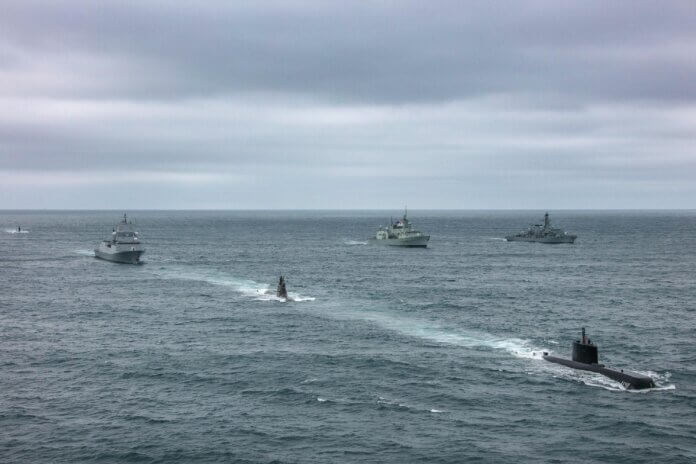Norway is to assess options for using uncrewed systems to provide embarked anti-submarine warfare (ASW)-focused air capability on its future frigates, the country’s Chief of Defence has said.
In a report titled ‘The Military Advice of the Chief of Defence 2023’, published on 7 June, General Eirik Kristoffersen set out recommendations on the shape and nature of the Norwegian armed services’ future force structures. The report follows a November 2022 government request for force structure recommendations. It also builds on the previous set of recommendations, made in 2019.
In the report, the Chief recommended that the Royal Norwegian Navy (RNoN) should assess the balance between using crewed and uncrewed systems when considering capability options for providing the rotary-wing, ASW-focused, organic air capability onboard a planned fleet of new frigates.
“The frigates must be equipped with helicopters for the detection and engagement of submarines, or alternatively unmanned systems if the technology is sufficiently mature by the time the frigates are introduced,” the report said. “The combination of frigates, helicopters and/or unmanned systems makes it possible to engage submarines before the frigate comes within range of the submarine’s torpedoes.”
A central recommendation in the report is that the RNoN should replace its four remaining Fridtjof Nansen-class frigates with six new frigates. The RNoN will also need to evaluate new organic air options, following Norway’s cancellation of its NH90 maritime helicopter programme in 2022.
Due to the NH90 cancellation, Norway is seeking a new ASW-focused maritime helicopter under an approved requirement; this is a priority programme under the Chief’s recommendations.
The report noted that “Unmanned systems can support and supplement manned platforms and [personnel] in all domains, and in more and more new ways.” Such new ways for concepts and operations include integrated interaction between crewed and uncrewed systems through ‘teaming’, it added.
As part of wider surface fleet rationalisation and renewal, the report recommended replacing the RNoN’s seven other surface ship classes (beyond its Fridtjof Nansen frigates) with two new standard vessel types (one large, and one small). These new vessels also will be equipped to carry uncrewed systems to add new capability and increased capacity, the report said. More broadly, it stated, “The Chief of Defence recommends following and contributing to developments within unmanned systems in the maritime domain and assessing the introduction of new systems as the technology matures and becomes available.”
by Dr. Lee Willett, London













